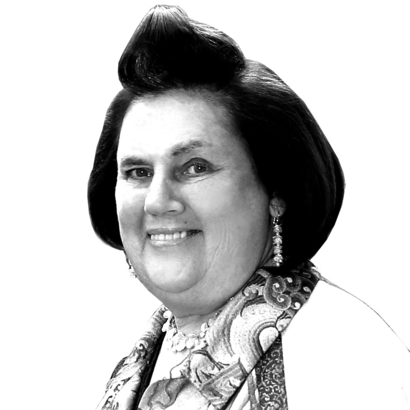“My goal right now is to solve how to stop using virgin materials,” declares designer Gabriela Hearst, taking a pause from finishing her first collection for Chloé to discuss her top priorities. There is no talk of silhouette or color palette or aesthetics in general—she is instead determined to remake this Richemont brand into the most sustainable luxury house around, reducing carbon emissions in every aspect of her collections, from production to design to the fashion show, with an eye toward carbon neutrality. As if spoiling for a fight, Hearst expresses a need for instant action. “We need to start to move to a more circular economy as soon as possible,” she says.
Welcome to the new Chloé. “It’s still about feminine values but also about the environment,” assures Riccardo Bellini, the brand’s C.E.O. “Chloé itself was in a bit of an identity crisis. My idea was to go deep into understanding the meaning of the brand and its very soul.”

Hearst, 44, is up for the challenge. Known as “Gabi” by her friends, she grew up on a 17,000-acre ranch called Santa Isabel, in Paysandú, Uruguay, surrounded by horses, sheep, and cattle. She completed her studies there and spent a short stint in Paris before moving to New York in 2003 and spending the next decade learning the ropes of the fashion trade. In 2013, she married Austin Hearst, a publishing scion and investor, and two years later she debuted a collection of elegant, city-and-country basics such as cashmere sweaters, felt-wool trousers, and silk shirtdresses during New York Fashion Week.
“Chloé itself was in a bit of an identity crisis.”
Her upscale-country-girl aesthetic made her a smart choice for Chloé, which was launched by Gaby Aghion in 1952. The brand became A Thing in the 1970s, when it was helmed by a then unknown Karl Lagerfeld. In recent decades, it has been led by a cadre of talented, female up-and-comers—Stella McCartney, Phoebe Philo, Clare Waight Keller—who were then propelled to even higher-profile jobs. Hearst takes over after the departure of Parisian cool girl Natacha Ramsay-Levi, whose designs were critically lauded but reportedly failed to sell briskly enough at retail. Still, in a statement, she said that stepping down had been her choice.
Hearst has been preparing for her big debut from New York, while, like most design editors, being obliged to work digitally with her atelier, in Paris. She showed her own label on February 18 at New York Fashion Week; the inspiration was a mash-up of the history of a Benedictine abbess who believed in “green power,” mixing knitting, embroidery, and tailoring. According to Hearst, the production of her 2020 collections used 40 percent re-purposed or deadstock materials.
Both the industry and the fashion-loving public will pay close attention to her fall ’21 Chloé collection, which will be shown in a digital format on March 3. Bellini’s motto? “Meaningful, beautiful—and profitable.”
I asked Hearst the big question of the 21st century: How in the spare-no-anything world of high fashion can you make beautiful things without waste? Looking like she relished the fight, she replied, “I am drawn to women who are warriors.” Takes one to know one.
Suzy Menkes is a storied fashion journalist and the author of several books, including The Royal Jewels and Fashion Designers A-Z: Etro Edition


